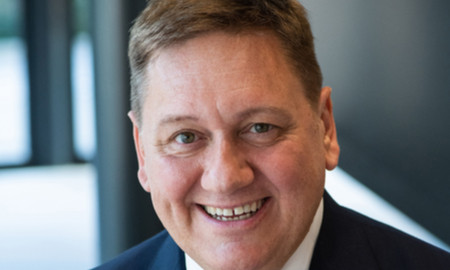Sign up for our free daily newsletter
YOUR PRIVACY - PLEASE READ CAREFULLY DATA PROTECTION STATEMENT
Below we explain how we will communicate with you. We set out how we use your data in our Privacy Policy.
Global City Media, and its associated brands will use the lawful basis of legitimate interests to use
the
contact details you have supplied to contact you regarding our publications, events, training,
reader
research, and other relevant information. We will always give you the option to opt out of our
marketing.
By clicking submit, you confirm that you understand and accept the Terms & Conditions and Privacy Policy
When it emerged earlier this week that Herbert Smith Freehills planned to combine with New York firm Kramer Levin Naftalis & Frankel, it’s fair to say the market – and most of HSF’s partnership by all accounts – was taken by surprise.
The tie-up does, however, have an undeniable logic, creating a sizeable presence in the lucrative US market for HSF and a large international footprint for Kramer Levin. The combined firm, which will be known as HSF Kramer in the US and Herbert Smith Freehills Kramer elsewhere, would boast more than $2bn in revenue and hold the promise of providing the firm with momentum to significantly improve its market position.
HSF’s US focus is underscored by the fact that Kramer Levin’s 60-lawyer Paris office – its only base outside of its home country (see map below) – won’t be included in the merger and is set to be spun out.
“This combination is part of a pattern of accelerating consolidation among law firms,” said Kent Zimmermann, of consultancy Zeughauser Group. “For law firms that aspire to global market leadership the US is an imperative. That’s because more money is spent on legal services in the US than is spent on legal services in all other countries combined and because the rates are higher in the US than most of the rest of the world.”

Despite the importance of the US, UK firms have struggled to build a serious presence there from scratch. Allen & Overy (A&O) sought to address that conundrum earlier this year through its merger with Shearman & Sterling, a deal that created the template for HSF’s own planned merger and other possible future deals.
Meantime, for a growing number of smaller US firms, Zimmermann said, a combination with a UK-rooted firm could be an attractive opportunity to achieve “a transformative level of scale while maintaining a level of independence in the US”. Such a deal could also bring the firm a higher profile and cross-selling opportunities.
HSF and Kramer Levin have understandably been careful to present the deal as a combination as opposed to a takeover. However, HSF’s revenue dwarfs Kramer Levin’s – $1.6bn compared to $453m, according to data published by Law.com – as does its lawyer headcount (2,330 versus 340).
Like A&O’s merger with New York’s Shearman, this is not a marriage of equals, a reality that is underscored by the fact that the top roles at the combined firm will go to the leaders of the UK-based firm, with HSF’s global CEO Justin D’Agostino and chair and senior partner Rebecca Maslen-Stannage set to retain their titles. Kramer Levin’s co-managing partners, Howard Spilko and Paul Schoeman, are to have places on the combined firm’s executive committee.
The deal isn’t set in stone, with the tie-up subject to a vote by the partnership of each firm next February and 75% approval from both needed for it to go through, according to a report by Law.com.
It’s hard to see a scenario in which there would be sufficient dissent for that not to happen, though a potential stumbling block is the firms’ differing levels of profitability.
Relative profit per equity partner (PEP) at HSF and Kramer Levin reflects the discrepancy between the US and UK markets, with Kramer’s sitting at just north of $2.4m and HSF’s substantially less, at $1.6m.
Firms with a similar level of profitability can create a common pay structure more easily, though they may still have to overcome challenges of divergent cultures. Those with bigger differences in profitability may choose to form a Swiss Verein to keep their finances separate, but HSF and Kramer have already said they won’t go down that route and intend for the combined firm to have a single global profit pool from day one.
HSF and Kramer Levin’s leaders told Law.com they were still working out the details of the combined firm’s pay structure so that partners are compensated fairly according to their region.
“Kramer Levin partners would be very reluctant to see their pay diluted by combining with a less profitable firm,” said Scott Gibson, director of legal recruitment consultancy Edwards Gibson. “However, HSF could potentially offset that by extending the top of its lockstep and combining that with merit-based pay for the merged firm.”
Gibson also pointed to the potential for Kramer Levin partners to view the merger less positively if they felt their firm – and their voice within it – was being swallowed by a larger rival.
Similarly, Gibson observed, HSF’s partners across Asia and Australia could have concerns about how the planned merger would shift focus away from their region and toward the UK and US.
However, D’Agostino told Financial News an enlarged US footprint would benefit rather than weaken HSF’s Asia practice, adding that he saw “enormous opportunities” for the practice as a result.
The firm has a significant APAC presence thanks to being the product of a merger between London’s Herbert Smith and Australian firm Freehills in 2012 and has more lawyers in Australia (716) than it does in the UK (632), according to publicly available data tracked by Pirical. Its top leadership is also weighted towards APAC, with D’Agostino splitting his time between London and Hong Kong and Maslen-Stannage working out of Sydney.
A large number of London-based partners left HSF in the immediate aftermath of its creation, though the deal has come to be regarded as a success, with the firm building up its European network in recent years.
Maslen-Stannage told Financial News that HSF and Kramer Levin had plans in place to implement measures to retain partners after the tie-up goes live, proposed for 1 May 2025.
She added that the merger to create HSF had worked because of the firm’s integrated profit pool, which encouraged collaboration, and that she and D’Agostino believed that success could be repeated with the Kramer Levin merger.
The combination will significantly strengthen HSF’s disputes practice, a core area that consistently earns top billings for the firm in legal rankings guides, as well as in sectors including energy, financial services, infrastructure, mining and technology.
Robert Bata, founder and principal of New York-based consultancy WarwickPlace Legal, noted that while the potential transatlantic tie-up is significant “it is different from what other UK firms have aimed for and will continue to aim for, in that I see this as primarily a disputes-focused move”.
He added: “UK firms have not generally made cracking the US litigation market a strategic goal, whereas disputes are solidly in the DNA of both HSF and Kramer Levin – although they obviously both have other good practice areas, and it will be interesting to see how those other practices match up in the eventual combination.”
The two firms’ ambitions for the merger go well beyond disputes, though, with their respective leaders telling Law.com they had a five-year investment plan aimed at growing the combined firm’s private equity bench in New York as well as its strengths in antitrust and energy.
Kramer Levin has bases in Silicon Valley and Washington DC as well as New York, but not the energy hub of Texas, which D’Agostino told Financial News had been identified as the fourth key US market for the combined business.
He added that the firm aimed to be in all of those jurisdictions “in a significant way” within the next few years.
“This is just the start for us in the US,” he said.

Email your news and story ideas to: [email protected]











